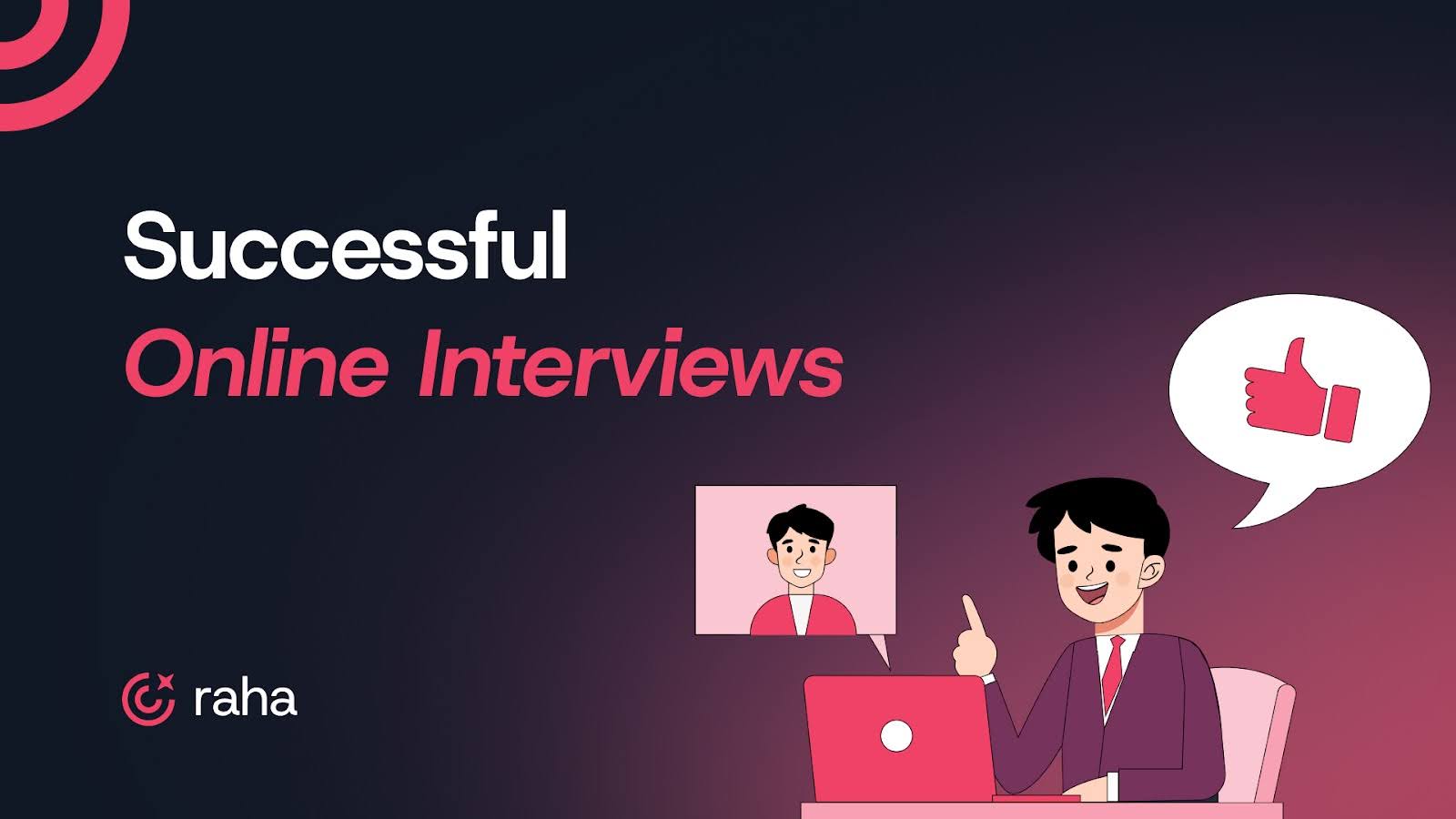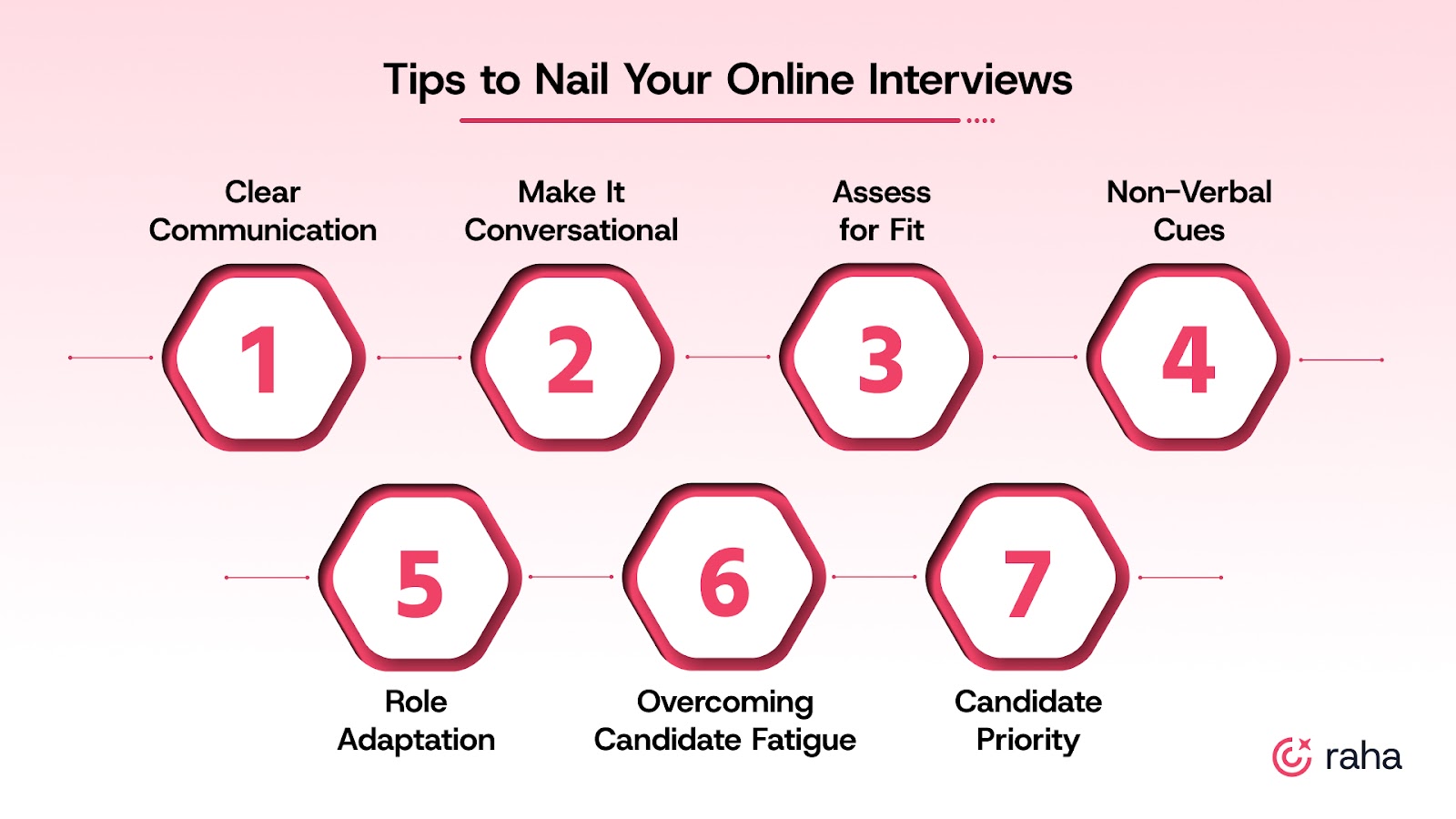
You’ve run enough interviews to know what works and what doesn’t. The problem isn’t a lack of effort. It’s the interviews that feel off. They’re too rushed or too vague to surface what really matters.
Maybe you’ve lost strong candidates because the process dragged on. Or you hired someone who looked great on paper but fizzled on the job.
Either way, interviews that don’t reflect the role or the real work are costing you time and trust.
This guide shares practical steps that help you run online interviews that are faster, clearer, and built to reveal actual fit.
Key Takeaways
- Testing your technology and having a backup plan in place will ensure a smooth online interview.
- A distraction-free, well-lit environment helps make the interview professional and focused.
- Asking behavioral and situational questions allows you to assess the candidate’s fit for the role.
- Building rapport through positive body language and open-ended conversation fosters a more comfortable environment for the candidate.
- Following up promptly with thank-you emails and constructive feedback enhances the candidate experience and strengthens your employer brand.
Why Online Interviews Are Here to Stay
We’ve all done them. Some were smooth, others were a mess of dropped calls, awkward delays, and interviewers talking over each other.
But no matter how you feel about them, one thing’s clear: online interviews are now a permanent part of the hiring stack. They cut out travel, scheduling becomes easier, and you’re not limited by geography.
That’s a win for speed and access. You get:
- Wider reach: You’re no longer limited by geography. Great candidates can join from anywhere.
- Simpler logistics: No travel, no meeting room coordination, fewer scheduling headaches.
- More flexibility: Candidates appreciate the ease, and it’s easier to get time on everyone’s calendars.
That said, online interviews do come with their own challenges. It’s harder to read the room, tech glitches happen, and building rapport over a screen isn’t always easy.
Let’s break down how to run online interviews that are structured, efficient, and still feel human.
How to Plan Successful Online Interviews in 5 Easy Steps
Online interviews offer clear benefits. However, they can feel distant if not done right. Here’s how you can do it.
Step 1: Check the Tech Before You Start
A frozen screen or dropped call can throw off a candidate’s rhythm and waste valuable time. It also makes your process feel unpolished. A quick tech check on both sides goes a long way in keeping things smooth and focused.
What can you do?
- Use stable, widely-used platforms like Zoom or Google Meet.
- Test audio, video, and internet 15 minutes before.
- Have a phone backup ready just in case.
Common Mistakes to Avoid:
- Assuming the candidate knows how to use your preferred platform.
- Overlooking timezone mismatches in calendar invites.

Step 2: Set Up a Professional and Distraction-Free Environment
How you show up on screen reflects how your team shows up at work. If the setup feels chaotic or unprepared, candidates notice.
What can you do?
- Take the call from a quiet, well-lit space.
- Use a clean or branded background.
- Dress in a way that reflects your company culture.
- Assign one person to lead and wrap up the panel interviews.
Common Mistakes to Avoid:
- Using virtual backgrounds with poor lighting or camera quality.
- Checking emails or multitasking during the call.
- Letting panel interviews run without structure.
Step 3: Prepare Questions That Reflect the Role and the Work
Strong interviews are focused, relevant, and designed to reveal how someone works, not just what’s on their resume.
What to do:
- Ask practical questions based on real team challenges
- Mix behavioral and situational questions
- Use silence to let candidates think before answering
- Follow up with "why" and "how" questions to get deeper insight
Common Mistakes to Avoid:
- Asking vague, generic questions
- Focusing only on surface-level answers
- Equating confidence with competence
Step 4: Make It a Two-Way Conversation
If the interview feels one-sided, you lose the chance to assess mutual fit, and the candidate leaves with a poor impression.
What to do:
- Start with a friendly, conversational tone
- Explain the team, the role, and why it matters
- Invite questions throughout the interview
- Match the energy and tone you want the candidate to remember
Common Mistakes to Avoid:
- Diving straight into questions without setting a context
- Talking for most of the interview
- Being overly formal or robotic
Step 5: End with Clear Next Steps
The last five minutes matter. This is where candidates form their final impression of the experience.
What to do:
- Share clear next steps and timelines
- Follow up promptly, even if there’s no update yet
- Offer thoughtful, specific feedback when possible
Common Mistakes to Avoid:
- Leaving candidates in the dark after the interview
- Giving vague or templated feedback
- Overpromising on timelines and not following through
Suggested read: What is Candidate Relationship Management? Key Steps, Challenges & Tools
6 Tips That Help You Lead Your Online Interviews Every Time
Running a good online interview takes more than just a Zoom link. The goal is to leave candidates feeling confident about your company and excited about the opportunity. With a few simple adjustments, you can make them smooth, engaging, and efficient.

1. Make the Process Easier with Clear Communication
Smooth logistics make interviews easier for everyone. Candidates shouldn’t have to guess what platform to use, how long the call will run, or whether there’s prep involved. Set clear expectations upfront so the focus stays on the conversation, not the setup.
Send a calendar invite with everything they need: platform link, time, format, and any prep materials. Here's an example:
Subject: Interview Invitation – [Job Title] Interview with [Company Name]
Dear [Candidate Name],
We are excited to invite you to interview for the [Job Title] position at [Company Name]. Below are the details for your interview:
- Date: [Insert Date]
- Time: [Insert Time]
- Platform: [Zoom/Google Meet/Microsoft Teams Link]
Please ensure you have access to the platform. If you encounter any issues, let us know. - Documents: Please review the attached [Company Overview/Job Description/Portfolio] before the interview.
- Instructions:
- Test your audio, video, and internet connection beforehand.
- Join the meeting at least 5 minutes before the scheduled time to ensure everything is set up.
If you have any questions or need further assistance, feel free to reach out.
Best regards,
[Your Name]
[Your Job Title]
[Company Name]
[Your Contact Information]
Pro Tip: Use Raha’s AI Interview Coordinator to handle all of this automatically. It syncs with your ATS, calendar, and email, sends scheduling emails, and follows up for availability – automating 90% of your interview management tasks.
Also Read: The Role of AI in Recruitment: A Comprehensive Guide
2. Adjust for the Role You’re Hiring For
Online interviews aren’t a one-size-fits-all scenario, especially when interviewing for different types of roles. Whether you’re hiring for a creative, technical, or leadership position, adapting your interview approach is key to assessing the right qualities.
Here’s how to tailor your approach:
3. Make It Conversational, Not Interrogational
To get a better read on someone’s fit, make the conversation feel more human. That doesn’t mean turning it into a casual chat. It means creating enough comfort and structure for the candidate to show who they are and how they think, not just recite their resume.
4. Pay Attention to Non-Verbal Cues
Remote interviews blur a lot of signals, but subtle non-verbal cues still tell you how a conversation is going. Facial expressions, posture, and camera presence give you context when words aren’t enough.
Here’s a quick reference:
5. Minimize Virtual Interview Fatigue
Long, repetitive online interviews drain candidates and your team. If the format feels transactional or scripted, engagement drops fast.
- Cap interviews at 30–45 minutes. Only extend if there’s a clear need, like a technical task or deep-dive panel.
- Use real examples. Ask candidates to walk through past work or solve a real scenario. Avoid a checklist of generic questions.
- Schedule 10-minute breaks. Don’t stack interviews back-to-back. Short breaks help both sides stay sharp.
6. Make the Candidate Feel Like They Matter
Candidates notice the little things. And in high-volume hiring, those small moments can shape their entire perception of your process.
To make things better:
- Send reminders ahead of the interview with clear instructions on how to access the interview link.
- Personalize the process by mentioning something specific from their resume or previous conversations.
- Provide clear next steps after the interview. Let them know when they’ll hear back.
Creating a personalized, human experience makes all the difference and can even sway candidates to accept an offer.
Make Every Interview Count, Start With Raha AI
A smooth online interview process sends a clear signal: your team is organized, respectful of their time, and serious about hiring well.
But behind every great experience is a great system.
Raha AI removes the friction by handling scheduling, coordination, and follow-ups automatically so that you can focus on real conversations.
Book a demo for faster, smarter hiring. Let’s make your next hire your best one!
FAQs
1. How can I make online interviews feel less impersonal?
Build rapport by engaging in small talk, maintaining eye contact, and being genuinely interested in the candidate's responses.
2. What are the best practices for conducting technical interviews remotely?
Use screen sharing to walk through coding problems or technical tasks, and ensure the candidate has access to the necessary tools before the interview.
3. How do I manage multiple online interviews in one day without burning out?
Schedule short breaks between interviews to refresh and use automated scheduling tools like Raha AI to eliminate manual coordination.
4. Can I assess a candidate's cultural fit through online interviews?
Yes, by asking situational questions and observing how candidates communicate and align with your company's values during the interview.
5. How can I avoid interviewer bias in virtual interviews?
Use structured interview formats with predefined questions and focus on the candidate’s responses, not their appearance or delivery.

